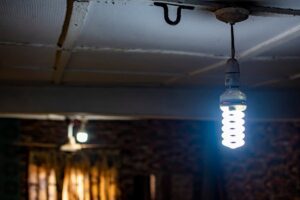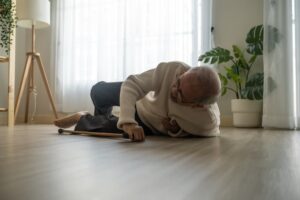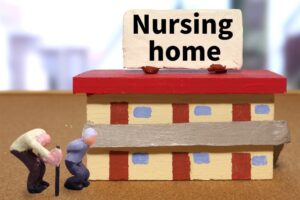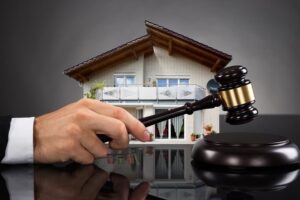Can Poor Lighting in Nursing Homes Contribute to Elderly Falls?
Abuse and Neglect, Nursing Home AbusePoor lighting in nursing homes can indeed contribute to elderly falls. As the population ages, the demand for long-term care facilities, such as nursing homes, has increased.
However, the safety of these facilities presents a growing concern. Inadequate lighting can make it difficult for elderly residents to get around their surroundings safely, increasing the risk of tripping over obstacles or losing balance.
Furthermore, poor visibility can also make it harder to identify hazards such as wet floors or uneven surfaces. These factors, coupled with the already decreased mobility, strength, and balance often seen in older adults, create a dangerous environment that can lead to serious injuries from falls.
Nursing homes must prioritize proper lighting to ensure the safety and well-being of their residents.
If you or a loved one suffered a fall due to poor lighting in a nursing home, contact an experienced nursing home accident lawyer near you to discuss your legal options and seek justice.
Importance of Adequate Lighting in Nursing Homes

Proper lighting is imperative for creating a safe and comfortable environment in nursing homes, particularly for elderly residents. Adequate lighting ensures that they can easily move around the facility and reduces the risk of accidents, such as slips and falls. It also plays a significant role in promoting their overall well-being and quality of life.
Good lighting in nursing homes serves multiple purposes. It allows residents to see clearly, reducing the chances of misjudging distances and making errors in their movements. It also helps them identify potential hazards and obstacles, such as furniture or objects left in their path.
Moreover, appropriate lighting contributes to creating a pleasant and welcoming atmosphere, positively impacting the mental and emotional health of residents, which can also help with their safety.
Factors Contributing to Inadequate Lighting
Unfortunately, many nursing homes suffer from poor lighting conditions due to various factors. Outdated lighting fixtures that do not provide sufficient brightness or coverage can contribute to inadequate lighting.
Insufficient maintenance of existing lighting systems can also lead to dim or flickering lights, further compromising the visibility of elderly residents.
Environmental factors such as shadows, glare, and uneven lighting can exacerbate the problem. Shadows can create deceptive visual cues, making it difficult for residents to navigate safely. Glare from bright lights or reflective surfaces can blind or distract residents, increasing the risk of accidents.
Additionally, inconsistent lighting throughout the facility can create uneasiness and confusion, making it challenging for elderly residents to get around confidently.
Impact of Poor Lighting on Elderly Falls
The consequences of poor lighting in nursing homes can be severe, particularly when it comes to elderly falls. Inadequate lighting contributes to a higher risk of slips, trips, and falls among residents.
The reduced visibility and distorted depth perception caused by poor lighting make it more challenging for elderly individuals to maintain their balance and detect potential tripping hazards.
Getting around the facility becomes daunting when residents cannot see clearly. Dark hallways, poorly lit stairwells, and dimly lit common areas create situations where accidents are more likely to occur. Even small objects, such as loose rugs or unmarked steps, can become significant risks when residents cannot see them clearly.
Legal Duty of Nursing Homes to Provide Adequate Lighting
Nursing homes are legally obligated to provide a safe and secure environment for their residents, including maintaining proper lighting conditions.
Laws and regulations set forth standards for facilities to follow to ensure the safety and well-being of the elderly. This includes adequate lighting throughout the premises to minimize the risk of accidents and injuries.
According to these legal obligations, nursing homes must ensure that their lighting systems are regularly inspected, maintained, and replaced when necessary.
They should also address any environmental factors, such as shadows and glare, that may affect the facility’s lighting quality. Failure to meet these requirements can result in legal consequences for nursing homes.
The Impact of Poor Lighting on Elderly Falls

Elderly individuals are more susceptible to falls due to various factors, including decreased vision, muscle weakness, and balance issues. Poor lighting exacerbates these risks, making it even harder for them to traverse their surroundings safely.
Here are some ways in which inadequate lighting can contribute to elderly falls in nursing homes:
Tripping Hazards
Nursing home hallways and rooms may contain numerous tripping hazards, such as loose carpeting, clutter, or uneven flooring. In dimly lit areas, these hazards become even more challenging to detect, increasing the likelihood of a resident tripping and falling.
Proper lighting not only helps residents see potential tripping hazards but also allows staff members to identify and address them promptly.
Lack of Contrast
Elderly individuals often experience reduced contrast sensitivity, making it harder for them to distinguish objects and obstacles from their surroundings. In nursing homes with poor lighting, objects may blend into the background due to inadequate contrast, making it difficult for residents to recognize potential hazards.
Difficulty Judging Distance
Dimly lit areas can make it challenging for elderly residents to judge distances accurately. This can result in missteps, leading to a fall. Adequate lighting helps individuals perceive depth and spatial relationships, allowing them to move around their environment safely.
Disorientation
Poor lighting can cause disorientation in elderly individuals, especially those with cognitive impairments. It can make it harder for them to distinguish different areas of the nursing home, increasing the risk of getting lost or confused.
Inadequate Visibility of Hazards
Hazards such as wet floors, slippery surfaces, or objects left in walkways are common in nursing homes. Insufficient lighting makes it harder to identify these hazards, increasing the risk of falls. By improving visibility through proper lighting, nursing homes can minimize the chances of residents encountering such dangers.
Common Areas of Poor Lighting in Nursing Homes

Elderly residents in nursing homes often have declining physical and cognitive abilities, making them more susceptible to falls and injuries.
Their decreased vision and slower reaction times make it imperative to have well-lit environments to help them navigate safely. Poor lighting in nursing homes can exacerbate these challenges and increase the risk of falls.
Dimly Lit Hallways and Common Areas
Dimly lit hallways and common areas can pose significant hazards to elderly residents. Lack of sufficient lighting can make it difficult for them to see obstacles in their path, such as uneven flooring or misplaced furniture.
It can also make it challenging for them to identify changes in the floor surface, such as transitions from carpet to tile, which can increase the risk of tripping and falling.
Inadequate Lighting in Stairways
Stairways are particularly dangerous in nursing homes, especially with inadequate lighting. Poorly lit stairways make it hard for elderly residents to see the steps and gauge their depth, leading to missteps and potential falls. Insufficient lighting can also obscure handrails, making it difficult for residents to hold onto them for support and stability.
Lack of Lighting in Bedrooms
Bedrooms are personal spaces where elderly residents spend a significant amount of their time. Inadequate lighting in bedrooms can make it challenging for residents to perform daily activities, such as getting out of bed, finding their way to the bathroom, or retrieving personal items.
Without proper lighting, they may struggle to maintain balance and potentially fall.
Common Injuries from Nursing Home Falls
Nursing home falls can result in a variety of injuries, ranging from minor bruises to more severe fractures and head injuries.
Understanding the common injuries that can occur can help families and caregivers recognize and address potential hazards in nursing home environments. Here are some common injuries associated with nursing home falls:
Hip Fractures
Hip fractures are one of the most serious injuries that can result from a fall among the elderly. The impact of a fall, combined with the frailty of aging bones, makes the hip susceptible to fractures.
Hip fractures can result in significant pain, loss of mobility, and overall decline in the elderly individual’s health. Surgery is often required to repair the fracture, followed by a lengthy rehabilitation process.
Head Injuries
Falls can also lead to head injuries, ranging from minor concussions to more severe traumatic brain injuries (TBIs). Head injuries can have long-term consequences, affecting cognition, memory, and overall brain function.
In some cases, head injuries can result in permanent disabilities or even death. You need prompt medical attention for a potential head injury, and legal action may need to hold the nursing home accountable for any negligence that contributed to the fall and resulting injury.
Fractures of the Wrist, Arm, or Leg
Fractures of the wrist, arm, or leg are common among nursing home residents who experience falls. These fractures can lead to pain, limited mobility, and difficulty with daily activities.
Depending on the severity of the fracture, surgery and rehabilitation may be required to regain function and independence.
Sprains and Strains
Sprains and strains are often seen as less severe injuries, but they can still cause significant pain and impact an individual’s ability to move and perform daily tasks.
Nursing home residents who experience falls may suffer sprained ankles, wrists, or other joints, which can hinder their quality of life and require medical treatment.
Emotional and Psychological Impact
In addition to physical injuries, nursing home falls can have a profound emotional and psychological impact on the injured individual. Fear of falling again, anxiety, depression, and a loss of confidence in their own abilities are common psychological effects.
Legal Considerations for Nursing Home Residents
When it comes to poor lighting in nursing homes, there may be legal implications for both the facility and the residents. If an elderly resident falls and suffers injuries due to inadequate lighting, certain legal considerations come into play:
Negligence on the Part of the Facility
Nursing homes have a duty of care to their residents, which includes providing a safe environment. Suppose poor lighting results from negligence from the nursing home staff or management. In that case, the facility may need to pay for any injuries sustained by residents due to falls caused by the lack of proper lighting.
Potential Legal Remedies for Injured Residents
Elderly residents who have suffered injuries due to poor lighting in nursing homes may have legal options to seek compensation for their damages. If negligence can be proven, they can file a personal injury claim against the nursing home to recover medical expenses, pain and suffering, and other losses associated with their injuries.
Seeking Legal Help for Falls Due to Poor Lighting in Nursing Homes

If you or a loved one has suffered a fall in a nursing home due to poor lighting, it is essential to consult with a skilled nursing home accident lawyer to understand your legal rights and options.
An experienced nursing home accident attorney can assess the circumstances of the fall, gather necessary evidence, and guide you through the legal process.
By contacting a lawyer, you can:
- Receive Compensation: If the nursing home’s negligence in maintaining proper lighting contributed to your fall and subsequent injuries, you might be entitled to compensation for medical expenses, pain and suffering, and other damages.
- Advocate for Change: Filing a legal claim can bring attention to the issue of poor lighting in nursing homes, potentially prompting the facility to improve its safety measures and prevent future falls.
- Hold Responsible Parties Accountable: An experienced nursing home accident lawyer can identify the parties responsible for the inadequate lighting, such as the nursing home facility or its management. Holding these parties accountable helps them seek justice and ensures that they take the necessary steps to improve safety standards.
Seeking Justice for Falls Due to Poor Lighting – Connect with a Seasoned Nursing Home Attorney Near You
If you or your loved one has suffered a fall in a nursing home due to poor lighting, do not hesitate to contact a seasoned personal injury attorney near you to discuss your legal options.
A skilled lawyer can provide personalized guidance and advocate for your rights, helping you seek justice for the harm you have experienced.
Remember, nursing homes must ensure the safety and well-being of their residents. By holding them accountable for their negligence in maintaining proper lighting, you can help prevent similar incidents from occurring in the future. Don’t delay. Contact a skilled nursing home accident attorney now.
Nathan Hughey, an attorney and fourth-generation South Carolinian, founded Hughey Law Firm in 2007. Before that, he spent five years defending nursing homes and insurance companies. Leveraging his experience, he now advocates for those injured or wronged by such entities, securing over $220 million in verdicts and settlements.
